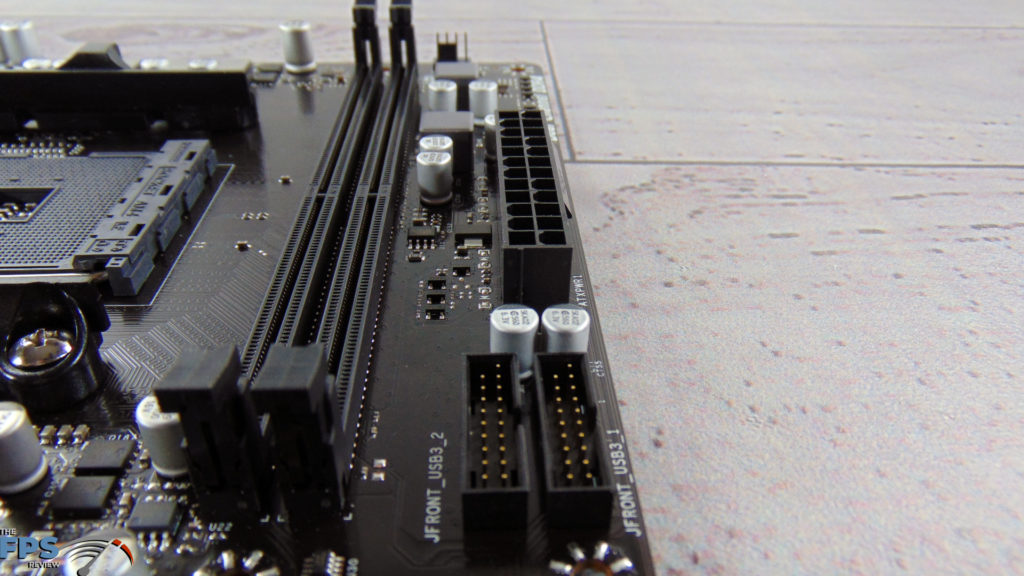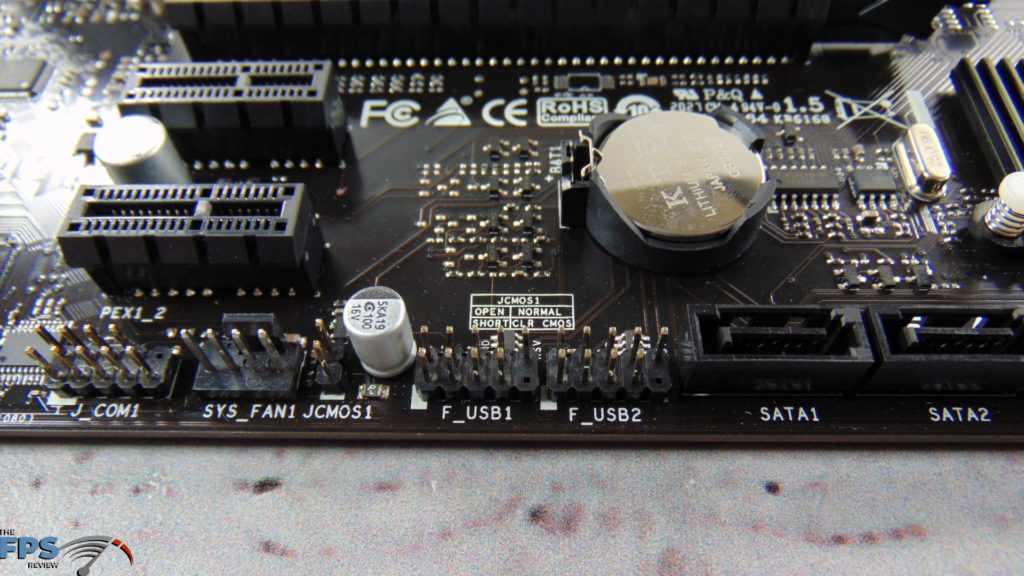
Introduction
Welcome to a new entrant in our motherboard reviews, BIOSTAR. Today we have the brand new micro-ATX BIOSTAR B550MH Version 6.0 Motherboard (AB55AM4S-R01 VER:6.0) for review. The BIOSTAR B550MH motherboard is only $96.99 on Amazon, so this is a very budget-oriented motherboard running the AMD B550 chipset that was just released this summer in 2020. If you want an under $100 B550 chipset based motherboard, then read on.
BIOSTAR is a well-known name, BIOSTAR has been with us as far back as 1986 when it was established. BIOSTAR has been producing and manufacturing motherboards since that time. Over the course of time, BIOSTAR has expanded in the design and manufacturing of add-on cards, multi-media system products and now produces SSDs, GPUs, Keyboards and Mice, SOCs, IPCs, and Accessories. Motherboards are still a primary mainstay from BIOSTAR, so this will be our first review of a BIOSTAR motherboard here at TheFPSReview.
Motherboard Goals
The first thing to note is that BIOSTAR’s “M” or “MH” series motherboards are not new. The “MH” series date far back. On the AM4 platform there is an AMD A320 “MH” motherboard, an AMD B350 “M” motherboard, an AMD X470 “MH” motherboard, an AMD B450 “MH” motherboard, and now a B550 “MH” and even a newer A520 “MH” motherboard. Therefore, the AMD B550MH motherboard we are reviewing is simply the “MH” series with the latest AMD chipset.
The MH series is BIOSTAR’s micro-ATX budget-oriented entry level motherboard for said chipset. The BIOSTAR B550MH Version 6.0 motherboard can be described as a fully capable motherboard for AMD Ryzen (Zen 2 and Zen 3) but with a lean configuration of the chipset, and legacy connectivity.
These motherboards are supposed to offer you the base features of the chipset in terms of CPU, RAM, and PCI-Express support. They are however outfitted with minimal configurations to offer the lowest price of entry to the AMD Ryzen AM4 ecosystem. They are still backed by BIOSTAR specific features however that boosts the motherboard from a reference spec.
The BIOSTAR B550MH Version 6.0 motherboard is geared toward the business and casual user and designed to be efficient and reliable. There is no RGB at all on this motherboard, and it also lacks RGB headers. However, BIOSTAR has added a bit of flair and interest to the motherboard with a stylish black PCB design, so while it is all business, it still looks unique and appealing. Again, this is a no RGB design, and with no RGB headers, you won’t be able to control case lighting or components.
Motherboard Box
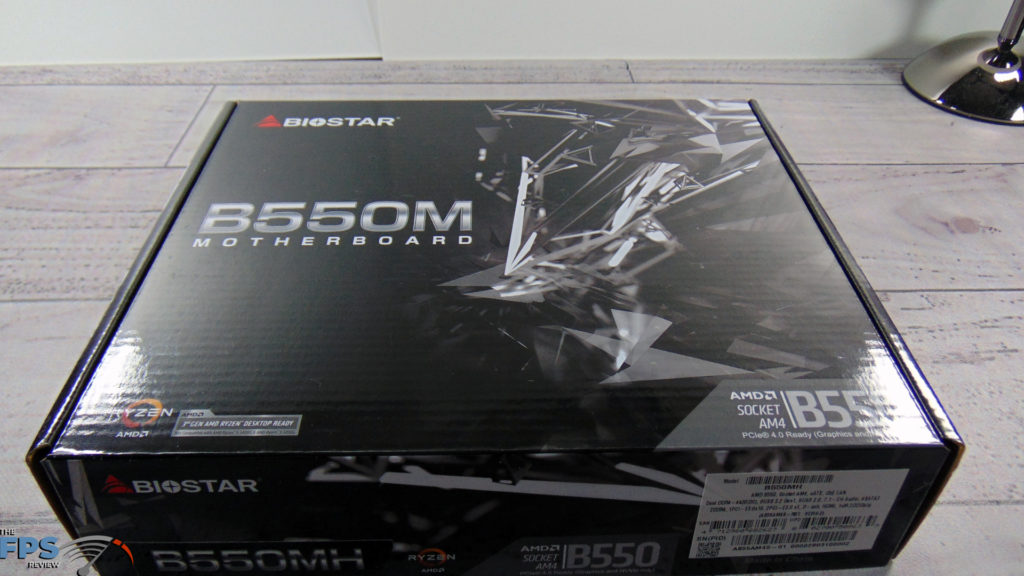
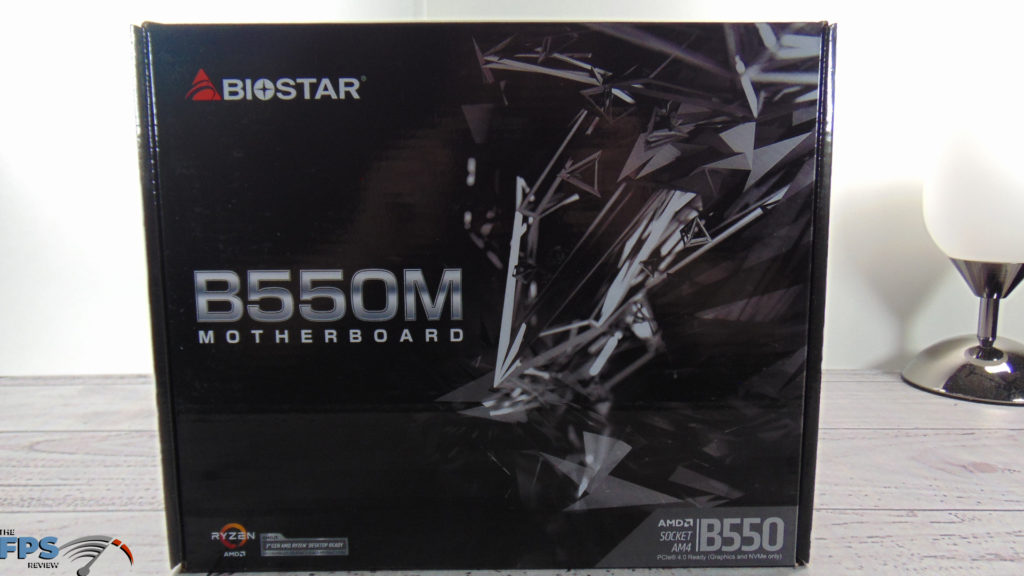

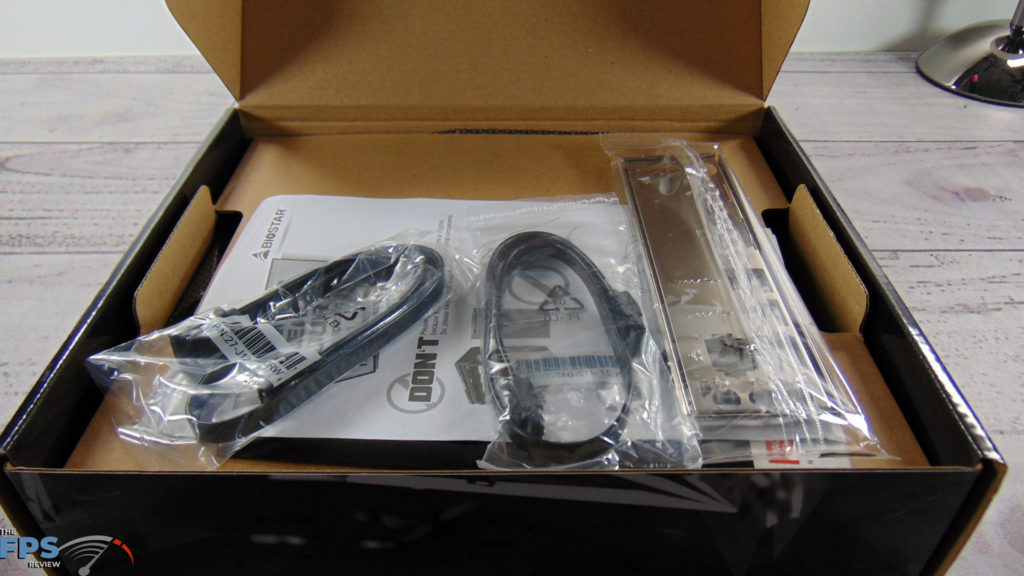

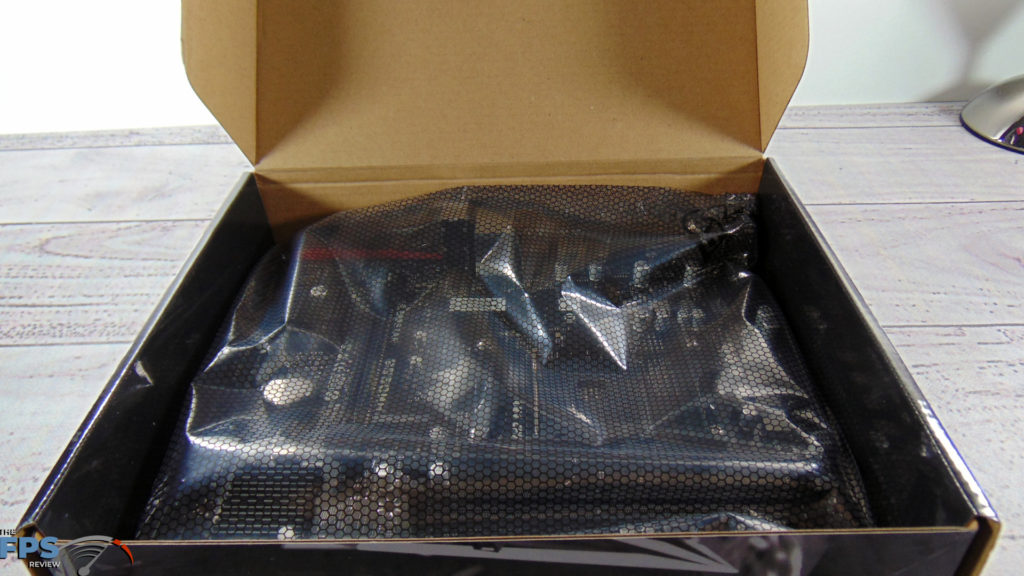
The box art is simple, refined, classy, and all the important information is printed on the box. Inside the box, you will find a minimal assortment of included parts and manuals. There is a quick install guide, a cleaning guide, and a CD. Hardware components only include two SATA III cables and the I/O shield cover for the back. This motherboard does not have an integrated I/O shield, part of the budget-oriented nature means you will be installing it manually. The motherboard itself simply sits in the box wrapped in an anti-static bag.
At first, we thought the M.2 screw was missing, but instead of having it in a bag in the accessories, BIOSTAR has actually screwed the screw into the 2280 length standoff on the motherboard. Therefore, if you are wondering how to screw your M.2 SSD in, look on the motherboard, there it is. Just unscrew the screw, and then you can install your M.2 drive and screw it into the standoff already installed for the 2280 length SSDs. The standoff can be removed if you have a shorter length. There is no M.2 heatsink included at all. Therefore, you might want to purchase an aftermarket heatsink to install if you have a fast NVMe PCIe 3.0 or PCIe 4.0 SSD to keep it cool and avoid throttling.
Motherboard Hardware
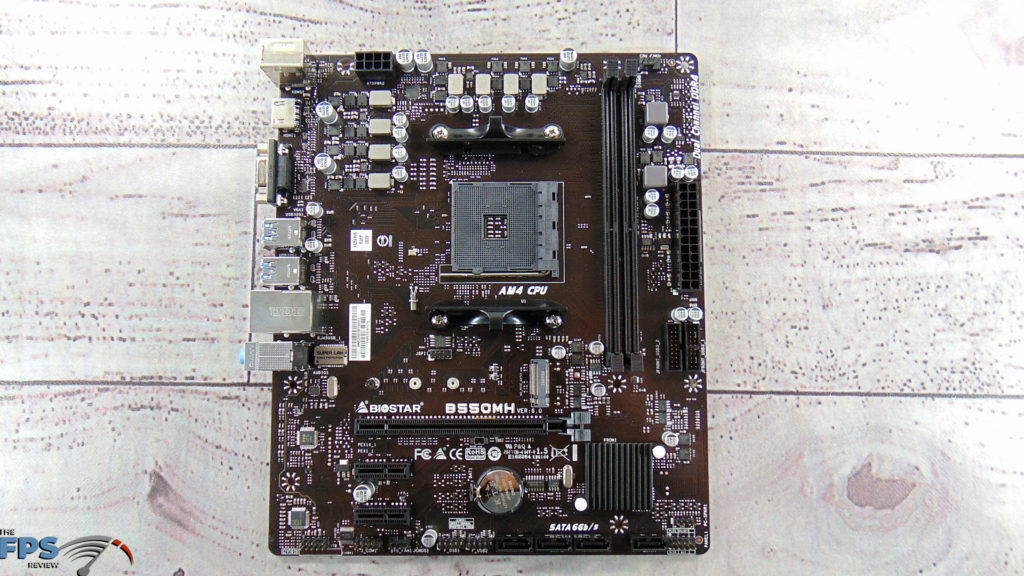
While the BIOSTAR B550MH Version 6.0 motherboard is configured to be very lean, that doesn’t mean BIOSTAR has wimped out on the design and components. This motherboard supports BIOSTAR features that elevate it beyond just a reference specification. It has a digital PWM to increase system efficiency with faster transient performance and stable power delivery. This motherboard uses BIOSTAR’s Durable+ component selection. It has Super Durable Ferrite Chokes for higher current capacity and lowers energy loss and better power delivery. It uses Super Durable Solid Caps with ultra-low ESR design which doubles the lifespan. It uses 100% Solid Caps with armor-plated BIOSTAR technology so that all capacitors have a long-life cycle, durability, and stability.
This motherboard also features BIOSTAR’s Moistureproof PCB which has a resistance to oxidizing and ionic migration or Conductive Anodic Filament so it will have higher reliability in moist or damp areas. The motherboard also has OC/OV/OH Protection. There is a special circuit design that detects overvoltage conditions and prevents voltage surges from spreading in real-time. It also actively cuts off the overvoltage supply to protect the system. Over-current protection protects when doing overclocking creating an unusual current import and Overheat protects from the motherboard and CPU from burning up exceeding temperature limitations.
Motherboard Configuration

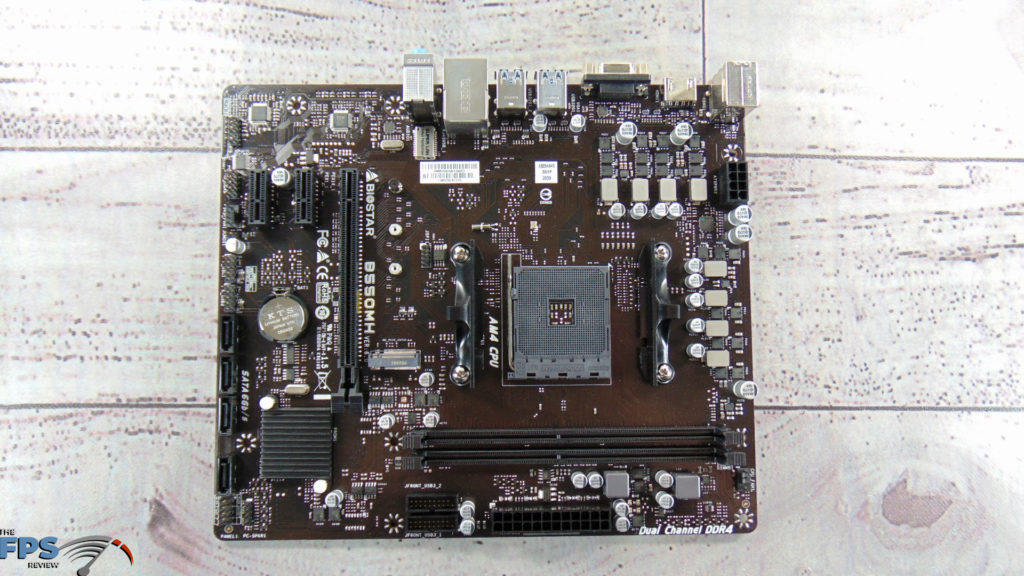


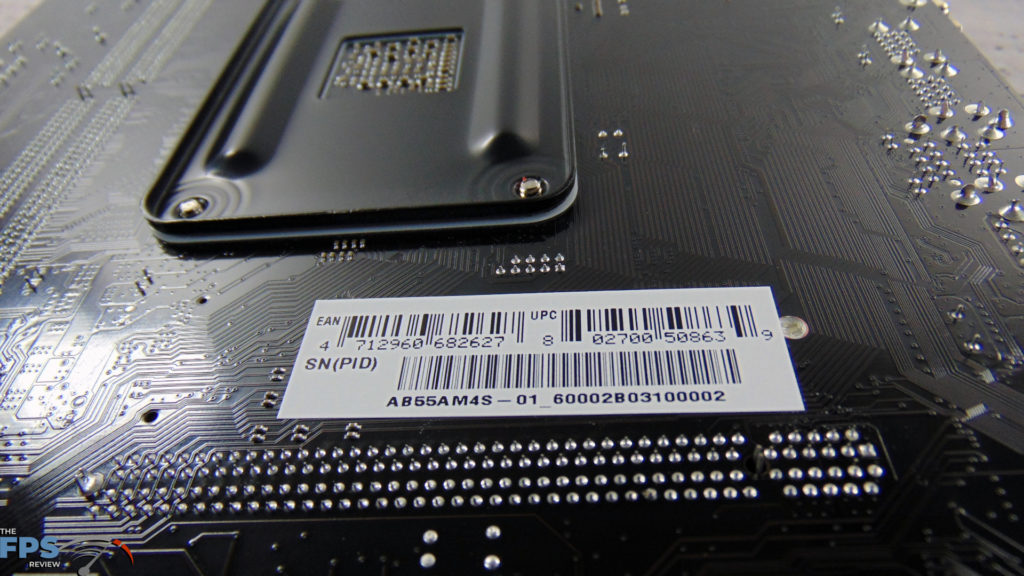

This is an m-ATX (micro-ATX) motherboard and measures 24.4cm (9.6 inches) in width and 20.8cm (8.1 inches) in length. Based on the AMD B550 chipset this motherboard supports Socket AM4 and AMD 3rd Gen Ryzen (Matisse/Renoir) processors. This is Zen 2, and with a BIOS update will support Zen 3. With 3rd Gen AMD Ryzen Matisse CPUs, it can support up to DDR4 4400+ (OC) memory frequencies. With 3rd Gen Ryzen Renoir APUs, it can support up to DDR4 4933+ (OC) memory frequencies.
With 2x Dual-Channel DDR4 DIMM slots it supports a maximum of 64GB of DDR4. This is more limiting than most Ryzen boards, but it does support high frequencies and 64GB is plenty for most uses in this class, remember this is a budget-oriented motherboard so you are likely to have either 16 or 32GB of RAM for a likely configuration in this level of the motherboard. Even though it doesn’t look it, that is two separate channels so it is dual-channel DDR4. Therefore, its maximum supported capacity and frequencies are expansive enough.

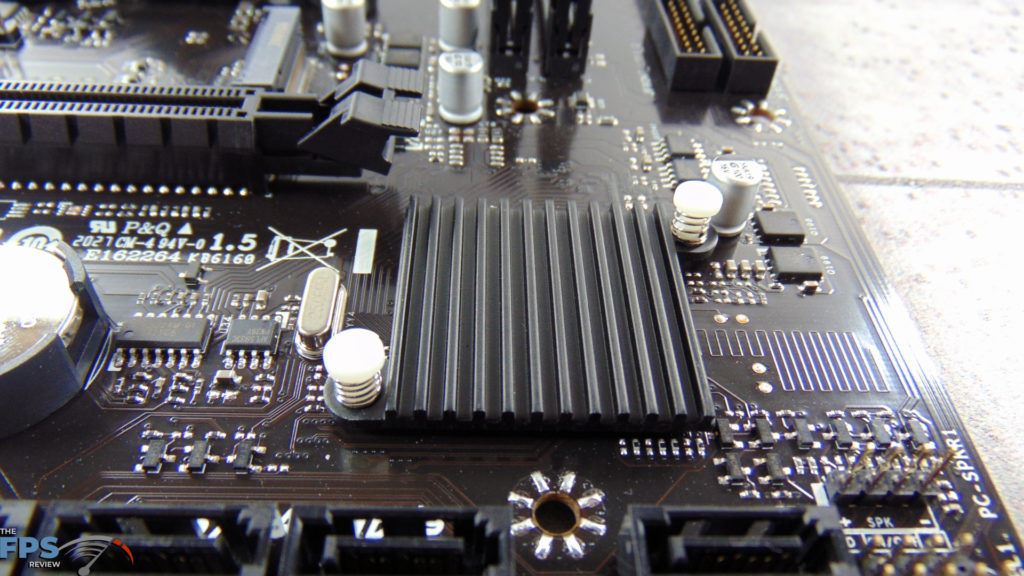
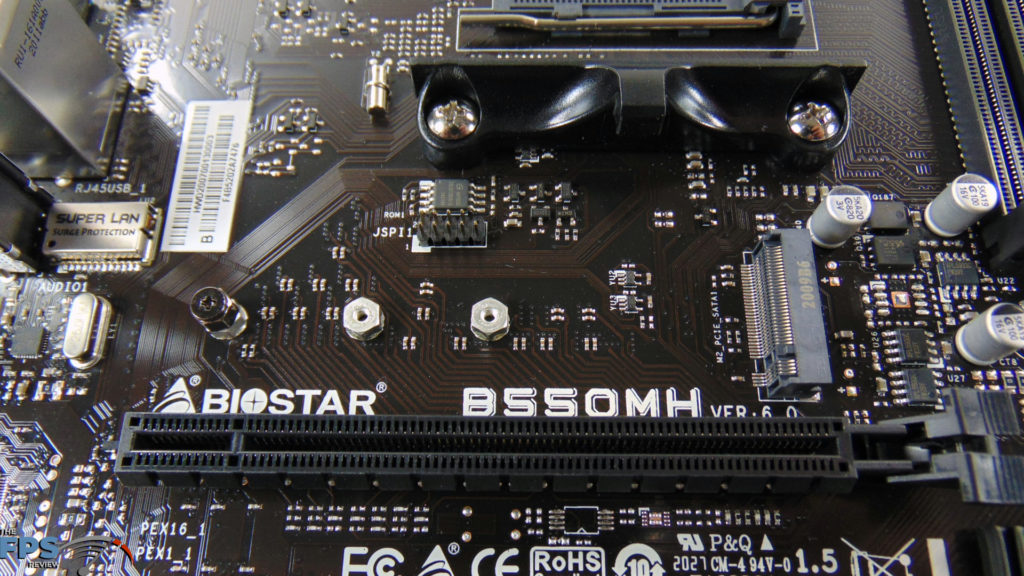
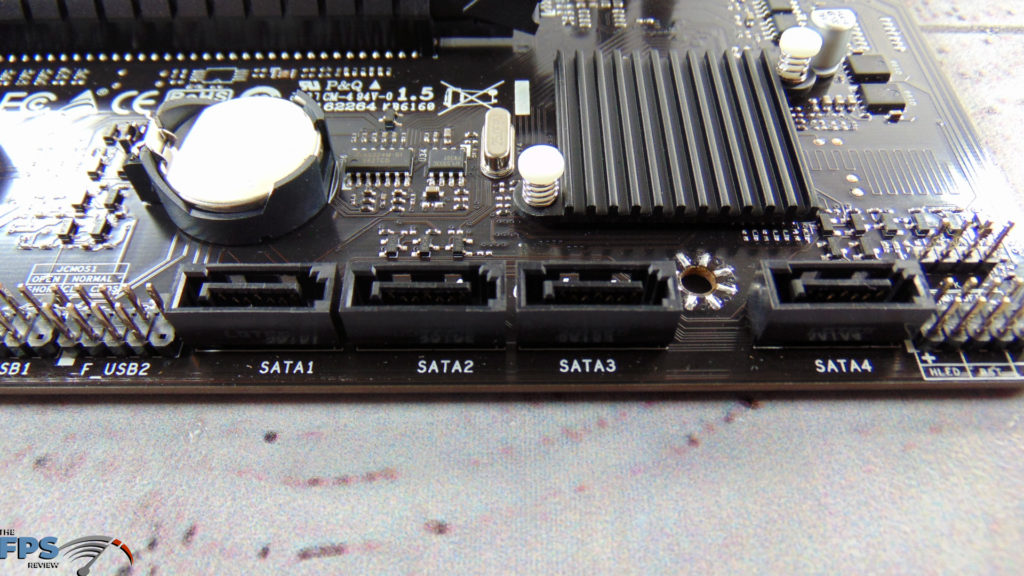
Because this is based on the B550 chipset PCI-Express 4.0 is supported. You will see that the chipset has a very simple passive heatsink installed. This motherboard supports a primary PCIe 4.0 slot for the GPU at 31.5GB/s, and it is also backwards compatible with PCIe 3.0. Second, with PCIe Gen 4 there is support for NVMe PCIe Gen 4×4 (64GB/s) on the M.2 slot for the best SSD performance you can buy today. The M.2 slot is also backwards compatible with NVMe PCIe 3.0 and SATA. The M.2 slot accepts sizes 2242/2260 and 2280.
Therefore, in terms of support, you can install the fastest PCIe Gen 4 SSDs on the market today and get super-fast storage performance that is not held back on this motherboard. The downside though, there is only one M.2 slot on this motherboard. If you need more hard drives you will either have to utilize the four SATA III ports onboard or put an SSD on a PCI-Express add-on-card. Therefore, natively, you get 1 M.2 SSD and 4 SATA hard drives that you can install on this motherboard. Thankfully there is support for hardware RAID 0, 1, and 10 on the SATA ports. The remaining expansion slots include 2x PCIe 3.0 x1 slots.

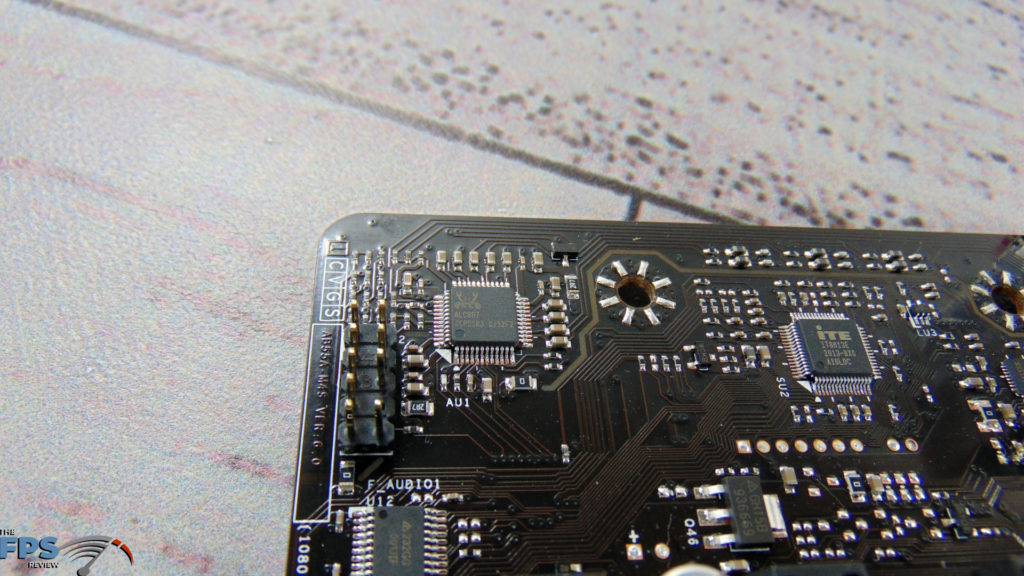
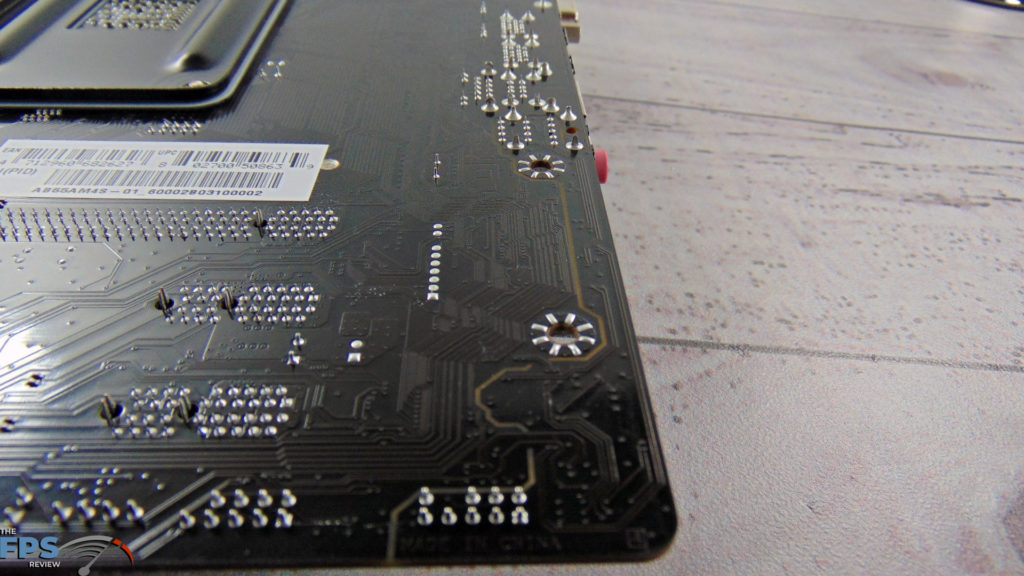
LAN onboard is handled by a Realtek RTL8111H chipset and can operate up to 1Gbps. This motherboard supports BIOSTAR Super LAN Surge Protection. This strengthens electrical stability and prevents damage from electrical surges. The audio chipset is ALC887 7.1 channel, High-Definition Audio, and Hi-Fi (Front) support. BIOSTAR Hi-Fi Ground (Golden Line) is supported which provides noise-blocking multi-layer PCB design to isolate analog audio signals from digital sources.
Motherboard I/O
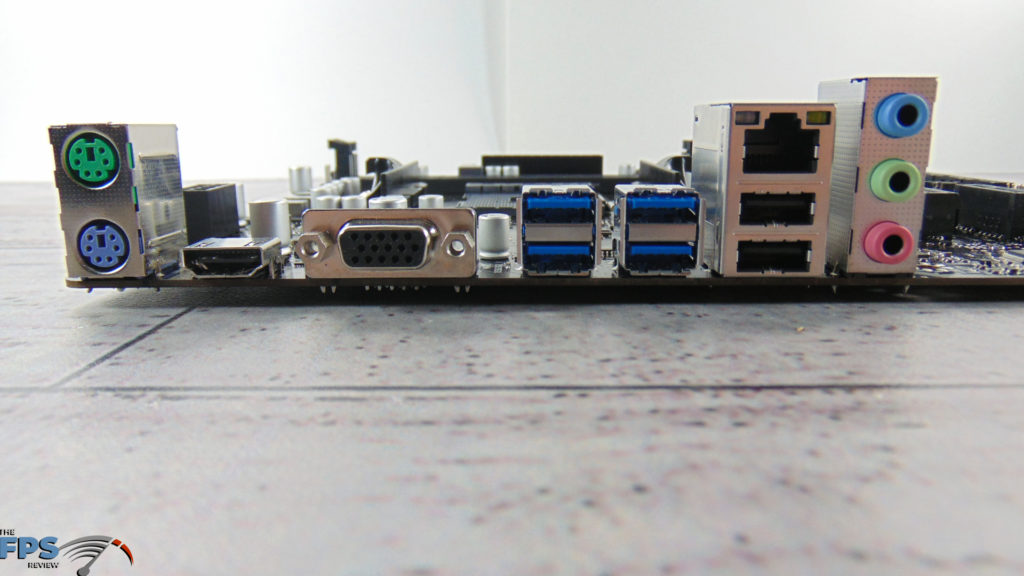
Uniquely there is a PS/2 keyboard and separate mouse connector on the rear I/O panel. There is also a VGA port. These are of course legacy connections now, but this motherboard supports them if you are upgrading from older hardware. You do also get an HDMI port if you are using an APU which supports 4K, with the 4x USB 3.2 gen1 ports and 2x USB 2.0 Ports and audio jacks.
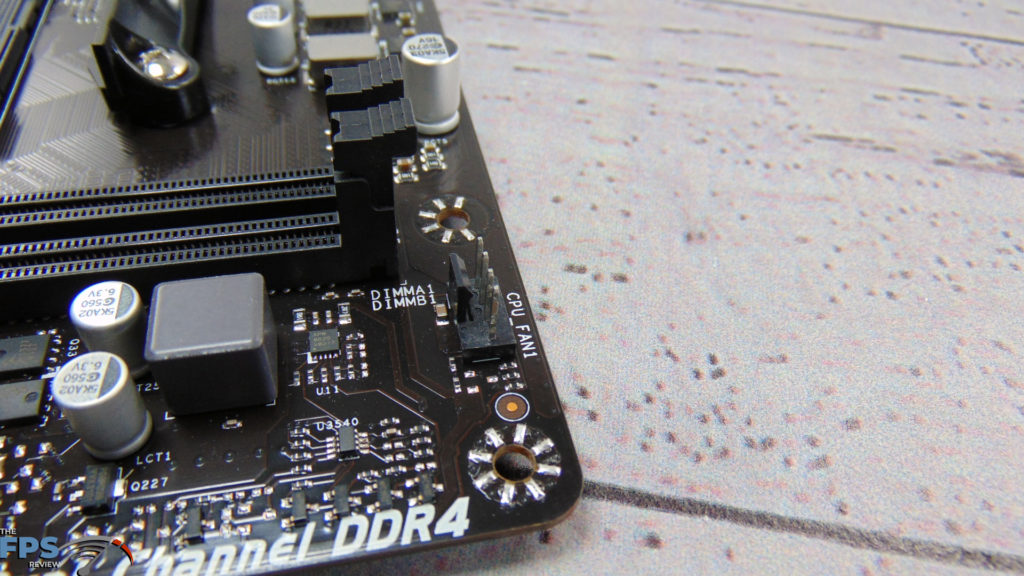
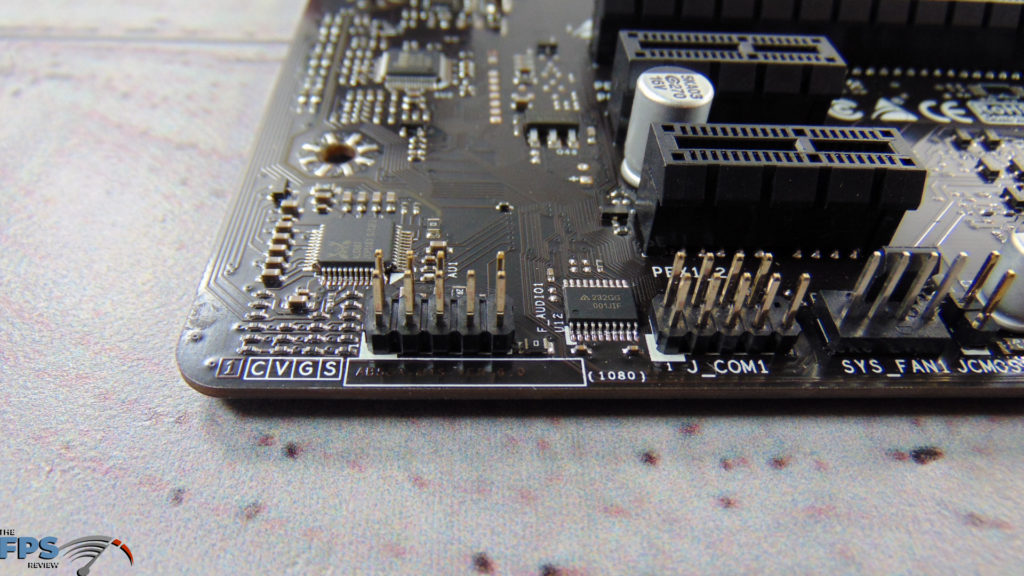
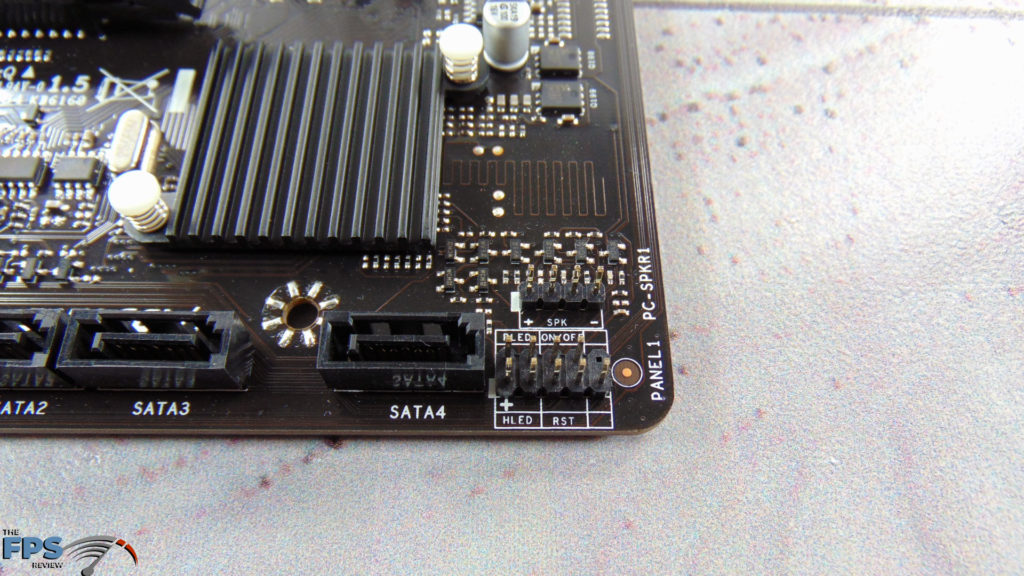


Internally there are 2x USB 2.0 headers and 2x USB 3.2 Gen 1 headers. There is only 1 system fan connector, that’s right, only one chassis fan can be connected via the motherboard, which is very limiting. Otherwise, it has 1 front panel header, 1 front audio header, 1 clear CMOS header, an internal stereo speaker header, and a COM port header, another legacy device we don’t see much anymore.
In terms of power, it has the standard 24-pin power connector and 1x 8-pin EPS 12V power connector.
Motherboard VRMs


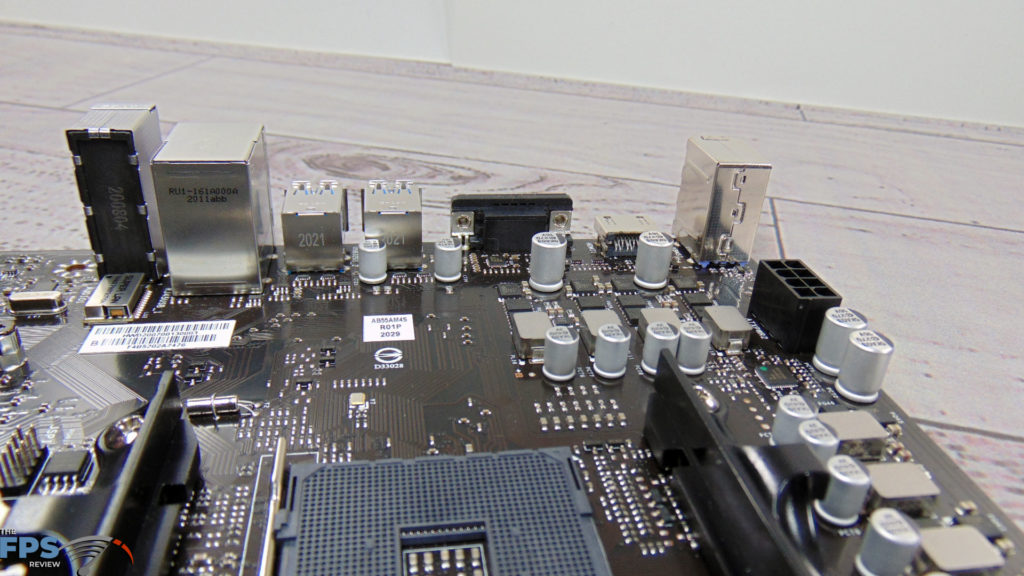
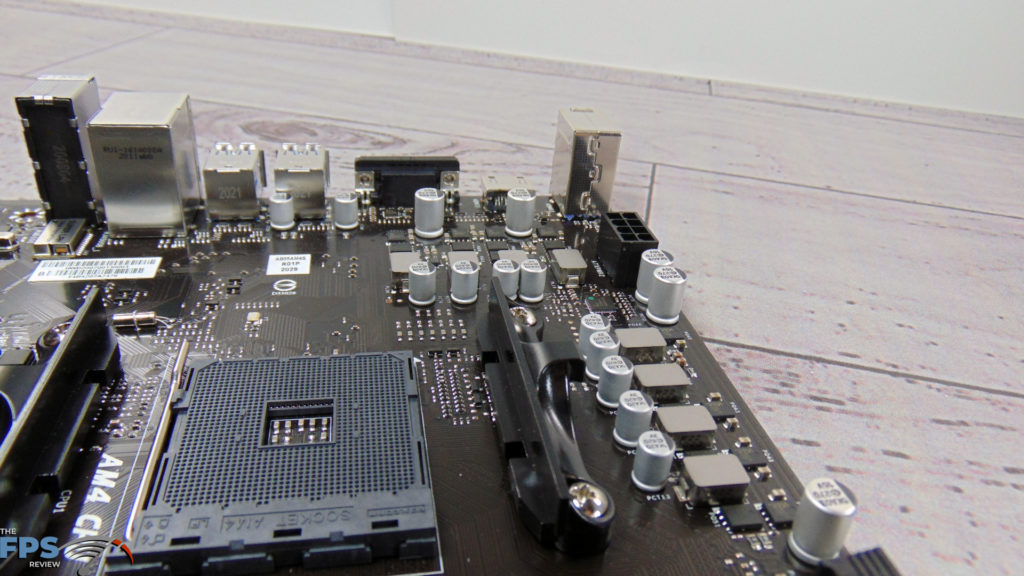


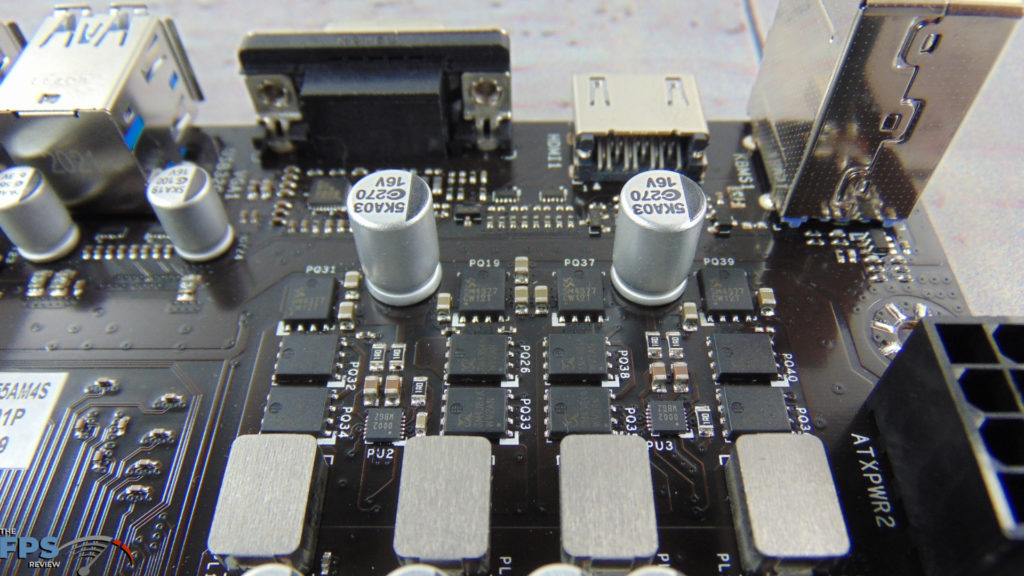

Let’s talk about the VRMs for a moment. The BIOSTAR B550MH Version 6.0 motherboard supports an 8-phase power design with no passive heatsinks installed. Keep in mind, this is a budget-oriented entry-level motherboard. Still, the inclusion of some kind of heatsink would have been nice to see, even if it was minimal. With no heatsink attached at all, you are highly relying on your case cooling and the movement of air, specifically in the top part of your case.
The 8-phase design is the bare minimum for this chipset in our opinion. On B550 motherboards above $200 we’ve seen exactly double the phase configuration with 16-phase designs. Even above $100, in the mid-$100 range, there are 10-phase designs. This 8-phase design is on the minimal side. However, there’s a bit more to that.
Firstly, the VRMs are controlled by a Renesas RAA 229004 controller. Looking closely at the VRM layout we first find that the spacing is quite wide, so it can get some air around the inductors, which is good. The configuration uses discrete MOSFETs and drivers instead of integrated power stages. BIOSTAR is using Sinopower SM4377 chips for the high side on all phases. However, on 5 of the phases there are two Sinopower SM4364A low side MOSFETs, and on 3 phases just one Sinopower SM4364A low side MOSFET. Doublers are used on some of the phases it appears.
From this configuration, it appears (our best guess because we have no datasheets) that this is a 5-phase configuration for CPU Voltage and 3 phases for SOC. We could be wrong, but that’s what it looks like from our end. We don’t have any technical documents to confirm this. We are purely going on the fact that 3 of the phases only have one low side, while 5 have two low sides. It makes sense that SOC would only get one low side whole CPU Voltage gets two low sides.
Typically, when we see a VRM arrangement like this for SOC it is for boards targeting APUs, and the B550 chipset motherboard is certainly one that targets the use of APUs. However, this means for actual CPU Voltage there are 5 phases available. However, BIOSTAR has at least provided two low side MOSFETs for each phase where they could have cheapened out with just one, so that’s good at least. I’d still be cautious about installing a 16-core 3950X on this motherboard though.
Motherboard BIOSTAR Features
There are some other features supported as well. BIOSTAR has hardware monitoring of CPU and System Temperature and System Fan monitoring. It also has a Smart CPU Fan Control called A.I FAN or Manual CPU Fan Control and System Voltage Monitoring. There is software you can download called BIOSTAR UEFI BIOS Utility to monitor these items from within Windows as well as overclock from within Windows.
Updating the BIOS is also easy thanks to BIOSTAR’s UEFI BIOS and BIO-Flasher utility. You can update the BIOS effortlessly from a USB flash drive with the utility from the BIOS.

